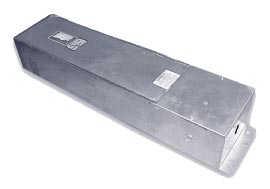Control Signal Filters
Control signal filters, also known as signal conditioning filters, are electronic circuits that process and manipulate electrical signals to make them suitable for use in control systems. The primary function of control signal filters is to remove unwanted noise and distortions from signals and enhance the desired characteristics of the signals to improve their quality and reliability. In a control system, the input signal may be distorted due to various factors such as electromagnetic interference, voltage fluctuations, and temperature variations. These distortions can cause errors in the control system's output, leading to unstable or unpredictable behavior. Control signal filters are used to remove such distortions and improve the accuracy and reliability of the control system. Control signal filters can be passive or active. Passive filters use passive components such as resistors, capacitors, and inductors to modify the frequency response of the signal. Active filters, on the other hand, use active components such as transistors and op-amps to amplify, attenuate or phase shift the signal. There are several types including low-pass, high-pass, band-pass, and notch filters. Low-pass filters allow low-frequency signals to pass through while attenuating high-frequency signals. High-pass filters do the opposite, allowing high-frequency signals to pass through while attenuating low-frequency signals. Band-pass filters allow signals within a specific frequency range to pass through while attenuating signals outside that range. Notch filters attenuate signals at a specific frequency and are useful for removing unwanted noise or interference.
Control signal filters, also known as signal conditioning filters, are electronic circuits that process and manipulate electrical signals to make them suitable for use in control systems. The primary function…
...of control signal filters is to remove unwanted noise and distortions from signals and enhance the desired characteristics of the signals to improve their quality and reliability.
In a control system, the input signal may be distorted due to various factors such as electromagnetic interference, voltage fluctuations, and temperature variations. These distortions can cause errors in the control system’s output, leading to unstable or unpredictable behavior. Control signal filters are used to remove such distortions and improve the accuracy and reliability of the control system.
Control signal filters can be passive or active. Passive filters use passive components such as resistors, capacitors, and inductors to modify the frequency response of the signal. Active filters, on the other hand, use active components such as transistors and op-amps to amplify, attenuate or phase shift the signal.
There are several types including low-pass, high-pass, band-pass, and notch filters. Low-pass filters allow low-frequency signals to pass through while attenuating high-frequency signals. High-pass filters do the opposite, allowing high-frequency signals to pass through while attenuating low-frequency signals. Band-pass filters allow signals within a specific frequency range to pass through while attenuating signals outside that range. Notch filters attenuate signals at a specific frequency and are useful for removing unwanted noise or interference.
-
ETS-Lindgren’s LRW Series Single & Dual Line Filters are UL Listed and come with mounting penetration and hardware for direct installation...FIND OUT MORE

